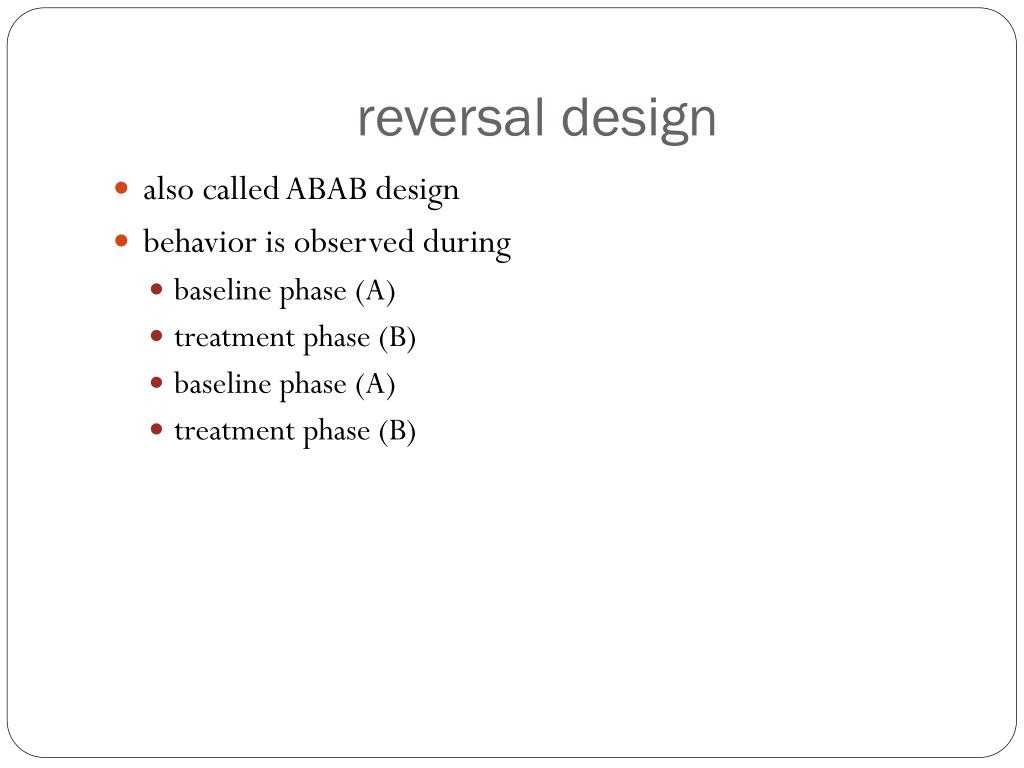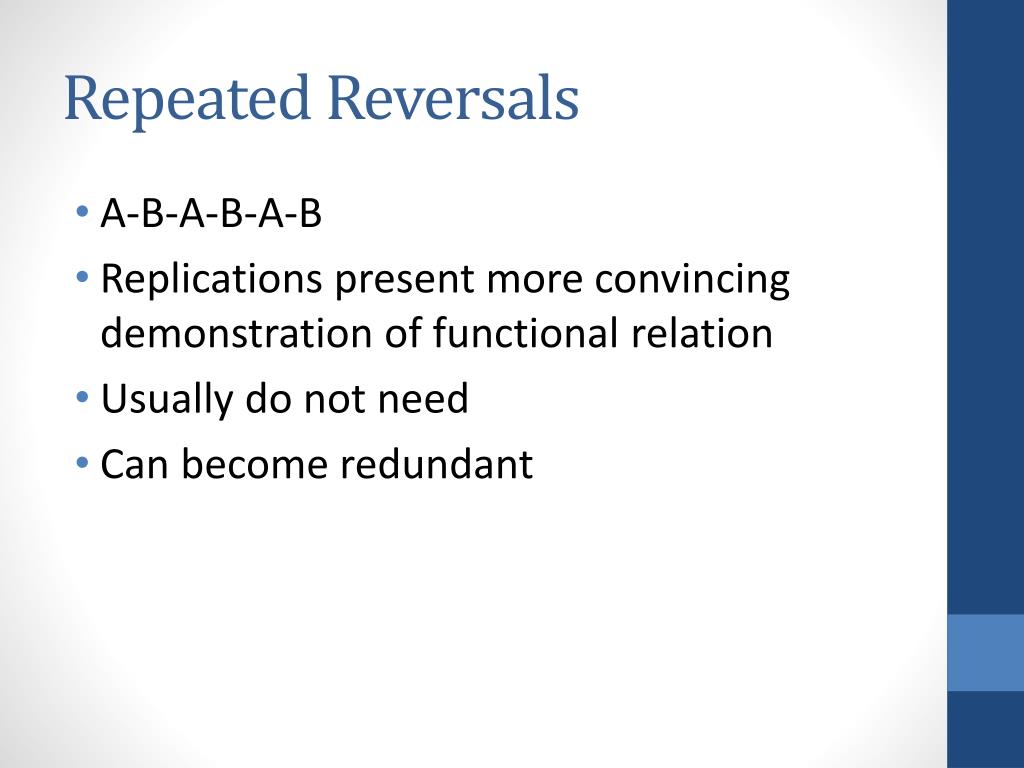Table Of Content

Another example of a situation where an integrated approach may be useful is selecting a diet for weight control. Many diets for weight control that vary in their macronutrient intake—such as low carb, higher fat versus low fat, and higher carb—have their proponents and favorable biological mechanisms. However, direct comparisons of these diets basically show that they achieve similar weight control with large variability in outcome. Thus, while the average person on a low-fat diet does about the same as the average person on a low-carb diet, some people on the low-carb diet do very well, while some fail. Some of the people who fail on the low-fat diet would undoubtedly do well on the low-carb diet, and some who fail on the low-fat diet would do well on the low-carb diet. However, there are drawbacks to this design, such as irreversibility of behavior.
IX. Chapter 9: Factorial Designs
The Motley Fool reaches millions of people every month through our premium investing solutions, free guidance and market analysis on Fool.com, top-rated podcasts, and non-profit The Motley Fool Foundation. The results suggest that memory loss may be reversed and improvement sustained with the therapeutic program, but Bredesen cautioned that the results need to be replicated. Bredesen, UCLA’s Augustus Rose Professor of Neurology, director of the Easton Center and the paper’s author, said the findings are “very encouraging,” but he added that the results are anecdotal, and a more extensive, controlled clinical trial is needed. Since it was first described over 100 years ago, Alzheimer’s disease has been without an effective treatment.
2 Single-Subject Research Designs
Therefore, SCEDs—especially reversal and multiple baseline designs—are evidently ideally suited to early phase translational research. This use complements the utility of SCEDs for identifying the optimal treatment for an individual or small group of individuals. One of them is changes in the level of the dependent variable from condition to condition. A second factor is trend, which refers to gradual increases or decreases in the dependent variable across observations.
Charge-reversal nanomedicines as a smart bullet for deep tumor penetration - ScienceDirect.com
Charge-reversal nanomedicines as a smart bullet for deep tumor penetration.
Posted: Tue, 25 Jan 2022 01:42:48 GMT [source]
Multiple baseline
The Center for Male Reproductive Medicine & Vasectomy Reversal in Los Angeles is devoted exclusively to treating problems of male infertility and vasectomy reversals. Board-certified urologist, andrologist and microsurgeon, Dr. Philip Werthman has more than 15 years of experience in successfully performing complex vasectomy reversals and treating male infertility. An inverted floor plan doesn't mean that you or your visitors open the front door and immediately step inside someone's bedroom.
The greater the percentage of nonoverlapping data, the stronger the treatment effect. Still, formal statistical approaches to data analysis in single-subject research are generally considered a supplement to visual inspection, not a replacement for it. The mean and standard deviation of each participant’s responses under each condition are computed and compared, and inferential statistical tests such as the t test or analysis of variance are applied (Fisch, 2001)[3]. (Note that averaging across participants is less common.) Another approach is to compute the percentage of non-overlapping data (PND) for each participant (Scruggs & Mastropieri, 2001)[4].
Why is the reversal—the removal of the treatment—considered to be necessary in this type of design? Notice that an AB design is essentially an interrupted time-series design applied to an individual participant. Recall that one problem with that design is that if the dependent variable changes after the treatment is introduced, it is not always clear that the treatment was responsible for the change.
The results of single-subject research can also be analyzed using statistical procedures—and this is becoming more common. There are many different approaches, and single-subject researchers continue to debate which are the most useful. The mean and standard deviation of each participant’s responses under each condition are computed and compared, and inferential statistical tests such as the t test or analysis of variance are applied (Fisch, 2001). (Note that averaging across participants is less common.) Another approach is to compute the percentage of nonoverlapping data (PND) for each participant (Scruggs & Mastropieri, 2001). This is the percentage of responses in the treatment condition that are more extreme than the most extreme response in a relevant control condition. In the study of Hall and his colleagues, for example, all measures of Robbie’s study time in the first treatment condition were greater than the highest measure in the first baseline, for a PND of 100%.
Dr. Werthman performs these procedures at an outpatient surgery center located in Beverly Hills and limits his surgery schedule to only one procedure a day, allowing him to focus solely on his patient and their needs. Second thoughts after a vasectomy happen for many reasons, and each family has their own story. Thanks to Dr. Werthman’s experience and in-depth expertise, most of his vasectomy reversal patients are new fathers within a year of their vasectomy reversal surgery. For more than 15 years, Los Angeles fertility specialist Dr. Werthman has performed 3-4 vasectomy reversals each week, with an overall 98% success rate. On average, that's 150 babies born each year, to families who thought they may never have children again.
It can include additional treatment conditions and returns to baseline., also called the ABA designThe simplest reversal design, in which there is a baseline condition (A), followed by a treatment condition (B), followed by a return to baseline (A).. During the first phase, A, a baselineA condition in a single-subject research design in which the dependent variable is measured repeatedly in the absence of any treatment. Most designs begin with a baseline condition, and many return to the baseline condition at least once. This is the level of responding before any treatment is introduced, and therefore the baseline phase is a kind of control condition.
By 2050, without effective prevention and treatment, an estimated 160 million people globally would have the disease, including 13 million Americans, which could potentially bankrupt the Medicare system. Unlike several other chronic illnesses, the incidence of Alzheimer’s is on the rise; recent estimates suggest that it has become the third leading cause of death in the U.S. behind cardiovascular disease and cancer. Bredesen therefore thought that, rather than a single targeted agent, the solution might be a multiple-component system approach, in line with the approach for other chronic illnesses. Patient 3’s memory was so bad that she used an iPad to record everything, then forgot her password.

In the top panel of Figure 10.6, there are fairly obvious changes in the level and trend of the dependent variable from condition to condition. Furthermore, the latencies of these changes are short; the change happens immediately. This pattern of results strongly suggests that the treatment was responsible for the changes in the dependent variable.
There's likely a much more dramatic entrance via a foyer or hallway, which typically leads to an attractive staircase or even an elevator that takes you up to the living space. Many inverted floor plans feature expansive windows on the top floor, allowing natural sunlight to filter in and keep the living areas warmer during the winter -- plus the brighter rooms cut down on electricity bills, too. In the summertime, the tucked-away bedrooms on the lower floors stay cooler because they're hidden from the strong rays of the sun. “That suggested that a broader-based therapeutic approach, rather than a single drug that aims at a single target, may be feasible and potentially more effective for the treatment of cognitive decline due to Alzheimer’s,” Bredesen said.
Single-case experimental designs (SCEDs) represent a family of research designs that use experimental methods to study the effects of treatments on outcomes. The fundamental unit of analysis is the single case—which can be an individual, clinic, or community—ideally with replications of effects within and/or between cases. These designs are flexible and cost-effective and can be used for treatment development, translational research, personalized interventions, and the study of rare diseases and disorders. Personalized N-of-1 trials can be considered a subcategory of SCEDs that overlaps with reversal designs. The most basic single-subject research design is the reversal designA single-subject research design that begins with a baseline condition with no treatment, followed by the introduction of a treatment, and after that a return to the baseline condition.
If the treatment involves learning, it may be impossible to “unteach,” so behavior witnessed at the baseline cannot be reproduced in a second baseline. For example, it may be dangerous and unethical to withdraw a client’s treatment that reduces self-injurious behavior. Dr. Werthman, for example, has completed more than 2,000 microsurgical vasectomy reversals and helped more than 20,000 couples with their fertility issues. “My goal with every couple is to make sure that they are fully educated about all of the possible options, procedures, alternatives and risks regarding a vasectomy reversal and other methods of conception." His mini-incision microsurgical vasoepididymostomy procedure is now used by fertility specialists and vasectomy reversal surgeons worldwide. This microsurgical technique also has been named one of the top 10 advances in fertility-related microsurgery and led to Dr. Werthman being honored for his achievement at the 2010 American Urological Association annual meeting.
This research method yields a high amount of data that can be analyzed by researchers. This data can then be used to support a researchers hypothesis and/or give insight before moving on to a group research project. A-B-A-B designs begin with establishing a baseline (A #1) then introduce a new behavior or treatment (B #1). Preparation of this special issue was supported by grants R01LM from the National Library of Medicine of the National Institutes of Health and P30AG from the National Institute on Aging of the National Institutes of Health. The funders had no role in the design and conduct of the study; collection, management, analysis, and interpretation of the data; preparation, review, or approval of the manuscript; or decision to submit the manuscript for publication. The views expressed in this paper are those of the authors and do not represent the views of the National Institutes of Health, the U.S.
No comments:
Post a Comment